 This is Simon Scott's formal debut for Touch and it is such a quintessential example of the label's aesthetic that it almost feels like a homecoming. It is similar to a homecoming in another way as well, as Scott composed these pieces from field recordings taken during Slowdive's extensive touring over the last few years, diligently editing and shaping them in hotel rooms during his idle hours. Upon returning, he teamed up with cellist Charlie Campagna and violinist Zachary Paul to transform his impressionistic audio diaries into a lushly beautiful and bittersweet ambient travelogue of sorts. In some ways, this side of Scott's work is less distinctive than his more dub-inflected albums, but he has a remarkably great ear for striking the perfect balance between vibrant textures and blurred, dreamlike elegance.
This is Simon Scott's formal debut for Touch and it is such a quintessential example of the label's aesthetic that it almost feels like a homecoming. It is similar to a homecoming in another way as well, as Scott composed these pieces from field recordings taken during Slowdive's extensive touring over the last few years, diligently editing and shaping them in hotel rooms during his idle hours. Upon returning, he teamed up with cellist Charlie Campagna and violinist Zachary Paul to transform his impressionistic audio diaries into a lushly beautiful and bittersweet ambient travelogue of sorts. In some ways, this side of Scott's work is less distinctive than his more dub-inflected albums, but he has a remarkably great ear for striking the perfect balance between vibrant textures and blurred, dreamlike elegance.
Hotter than July. This week's episode has plenty of fresh new music by Marie Davidson, Kim Gordon, Mabe Fratti, Guided By Voices, Holy Tongue meets Shackleton, Softcult, Terence Fixmer, Alan Licht, pigbaby, and Eiko Ishibashi, plus some vault goodies from Bombay S Jayashri and Pete Namlook & Richie Hawtin. Solstice moon in West Midlands, UK photo by James. Get involved: subscribe, review, rate, share with your friends, send images! |


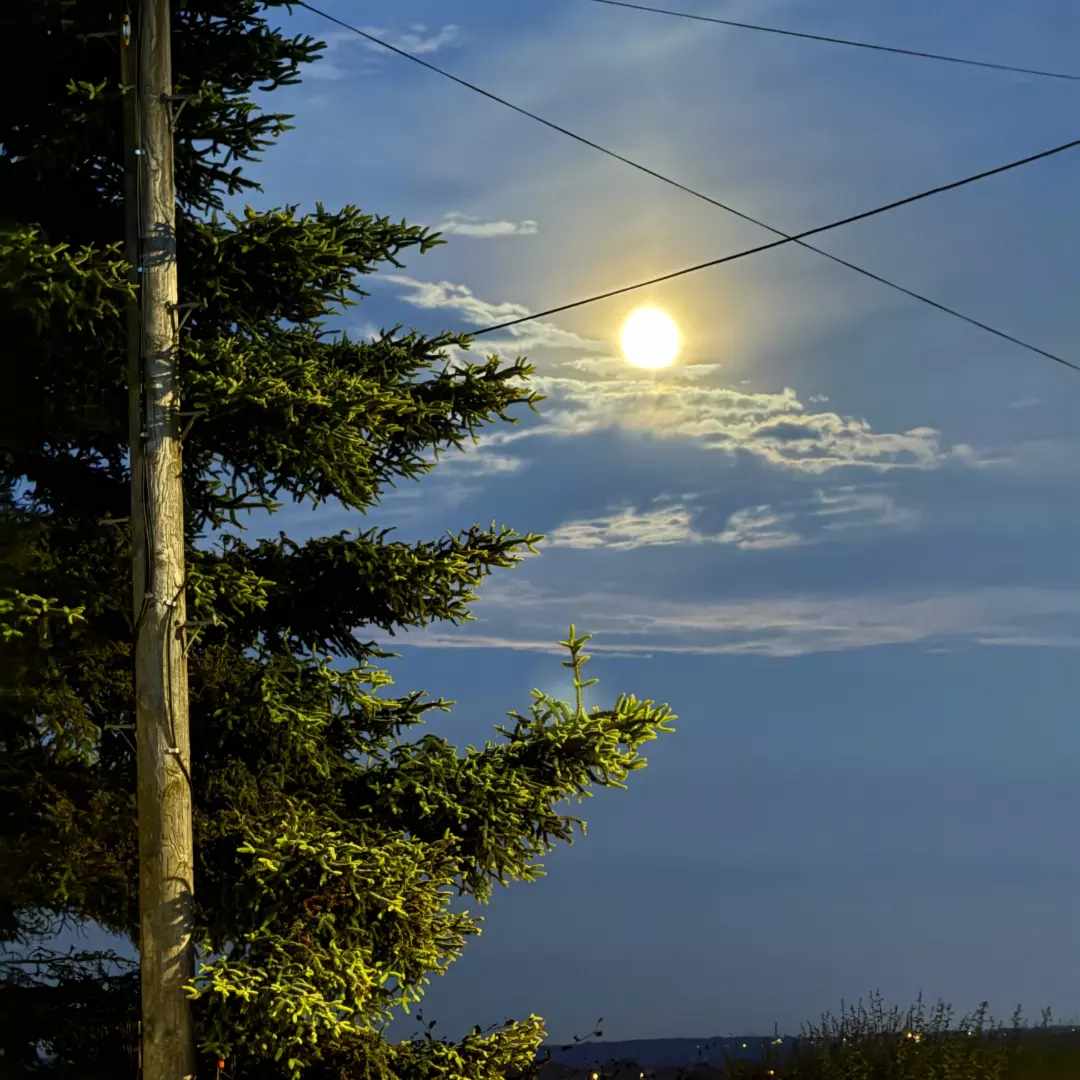
 Newly remastered and reissued on Metropolis, 1988's The Golden Age hails from an especially transitory and unsettled phase of The Legendary Pink Dots' history: it was composed in the wake of a disastrous tour in which half of the band quit. Also, Edward Ka-Spel and The Silverman were kicked out of their squat in Amsterdam and left the city to take up residence in Niels van Hoorn's caravan in the countryside. And, to flesh out that scene still further, the album was recorded in a poorly heated farmhouse. That seems like quite a dark and rough stretch to me, yet it is clear from interviews that Ka-Spel found the experience refreshing and creatively rejuvenating and both he and The Silverman have since singled out The Golden Age as one of their favorite LPD releases. I cannot say that I fully share that assessment myself, as it is a bit of a difficult and uneven album at times, but there is definitely a brilliant EP lurking among this strange and kaleidoscopic suite of songs. At its best, The Golden Age feels like a playfully lysergic, darkly whimsical, and endearingly baroque series of regret-soaked scenes plucked from a vivid, haunting novel that only exists in Edward Ka-Spel's head.
Newly remastered and reissued on Metropolis, 1988's The Golden Age hails from an especially transitory and unsettled phase of The Legendary Pink Dots' history: it was composed in the wake of a disastrous tour in which half of the band quit. Also, Edward Ka-Spel and The Silverman were kicked out of their squat in Amsterdam and left the city to take up residence in Niels van Hoorn's caravan in the countryside. And, to flesh out that scene still further, the album was recorded in a poorly heated farmhouse. That seems like quite a dark and rough stretch to me, yet it is clear from interviews that Ka-Spel found the experience refreshing and creatively rejuvenating and both he and The Silverman have since singled out The Golden Age as one of their favorite LPD releases. I cannot say that I fully share that assessment myself, as it is a bit of a difficult and uneven album at times, but there is definitely a brilliant EP lurking among this strange and kaleidoscopic suite of songs. At its best, The Golden Age feels like a playfully lysergic, darkly whimsical, and endearingly baroque series of regret-soaked scenes plucked from a vivid, haunting novel that only exists in Edward Ka-Spel's head.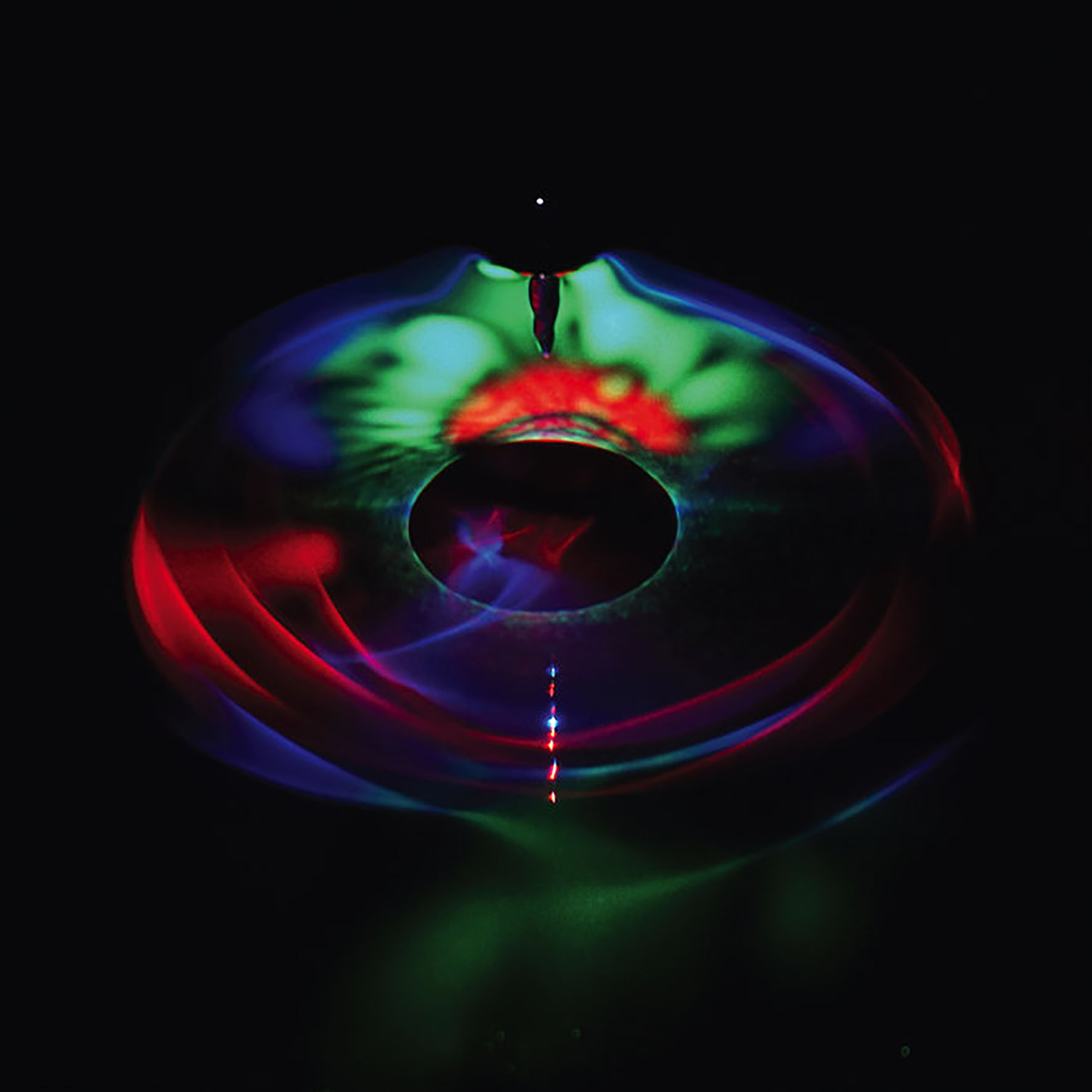 This latest release is more of a diversion than a fresh addition to the canon of William Basinski masterworks, as it was originally composed for a pair of installations for an exhibition in Berlin. In keeping with theme of the show ("Limits of Knowing"), he stepped outside of his usual working methods to craft floating ambient soundscapes sourced from recordings captured by the Laser Interferometer Gravitational-Wave Observatory (LIGO). Looked at another way, however, On Time Out of Time could be seen as Basinski's normal working methods taken to their ultimate extreme: instead of harvesting sounds from decaying tapes a few decades old, he is now harvesting billion-year-old sounds created by merging black holes. As far as singular, awe-inspiring cosmic events go, that is fairly hard to top, but it must be said that Basinski on his own has a more melodically and harmonically sophisticated sensibility than most (if not all) black holes. As such, the appeal of On Time Out Of Time lies more in the ingenious transformation of the source material than in the finished compositions (though they are quite likable).
This latest release is more of a diversion than a fresh addition to the canon of William Basinski masterworks, as it was originally composed for a pair of installations for an exhibition in Berlin. In keeping with theme of the show ("Limits of Knowing"), he stepped outside of his usual working methods to craft floating ambient soundscapes sourced from recordings captured by the Laser Interferometer Gravitational-Wave Observatory (LIGO). Looked at another way, however, On Time Out of Time could be seen as Basinski's normal working methods taken to their ultimate extreme: instead of harvesting sounds from decaying tapes a few decades old, he is now harvesting billion-year-old sounds created by merging black holes. As far as singular, awe-inspiring cosmic events go, that is fairly hard to top, but it must be said that Basinski on his own has a more melodically and harmonically sophisticated sensibility than most (if not all) black holes. As such, the appeal of On Time Out Of Time lies more in the ingenious transformation of the source material than in the finished compositions (though they are quite likable). Taken together, these two recent releases from the always prolific Francisco López perfectly encapsulate not only the breadth of his work, but also the extreme duality of his approach. Sonic Fields Vlieland is a three hour, six segment piece made exclusively by treating field recordings captured on the Dutch island of Vlieland while Untitled #337 is a full-on technology-based work that utilizes software creation and the limitations of digital recording methodologies. Both works are very different in their sound and methods of composition, but both also showcase López’s exceptional artistry.
Taken together, these two recent releases from the always prolific Francisco López perfectly encapsulate not only the breadth of his work, but also the extreme duality of his approach. Sonic Fields Vlieland is a three hour, six segment piece made exclusively by treating field recordings captured on the Dutch island of Vlieland while Untitled #337 is a full-on technology-based work that utilizes software creation and the limitations of digital recording methodologies. Both works are very different in their sound and methods of composition, but both also showcase López’s exceptional artistry. It would be misleading to say that Cosey Fanni Tutti has been a singularly unprolific solo artist, as her oeuvre has never been constrained to simply music, but it is noteworthy that her last original solo album (Time to Tell) was released almost four decades ago. That album was stellar, setting quite a high bar for future releases. Also significant: Cosey's career has undergone a well-deserved renaissance in the last couple years, culminating in the release of her acclaimed memoir Art Sex Music. As a result, Tutti has the somewhat unenviable curse of being an album preceded by months of anticipation and high expectations. For better or worse, Cosey has nimbly sidestepped that situation to some degree, as Tutti is more of a soundtrack than a major new artistic statement…musically, anyway. On a conceptual level, this album is loosely intended as a career-spanning self-portrait built from reworked archival recordings. Cosey took that "reworking" part quite seriously though, so this album often feels like a warmly hallucinatory collection of instrumental Chris & Cosey remixes despite the submerged ghosts of more abrasive and transgressive days.
It would be misleading to say that Cosey Fanni Tutti has been a singularly unprolific solo artist, as her oeuvre has never been constrained to simply music, but it is noteworthy that her last original solo album (Time to Tell) was released almost four decades ago. That album was stellar, setting quite a high bar for future releases. Also significant: Cosey's career has undergone a well-deserved renaissance in the last couple years, culminating in the release of her acclaimed memoir Art Sex Music. As a result, Tutti has the somewhat unenviable curse of being an album preceded by months of anticipation and high expectations. For better or worse, Cosey has nimbly sidestepped that situation to some degree, as Tutti is more of a soundtrack than a major new artistic statement…musically, anyway. On a conceptual level, this album is loosely intended as a career-spanning self-portrait built from reworked archival recordings. Cosey took that "reworking" part quite seriously though, so this album often feels like a warmly hallucinatory collection of instrumental Chris & Cosey remixes despite the submerged ghosts of more abrasive and transgressive days.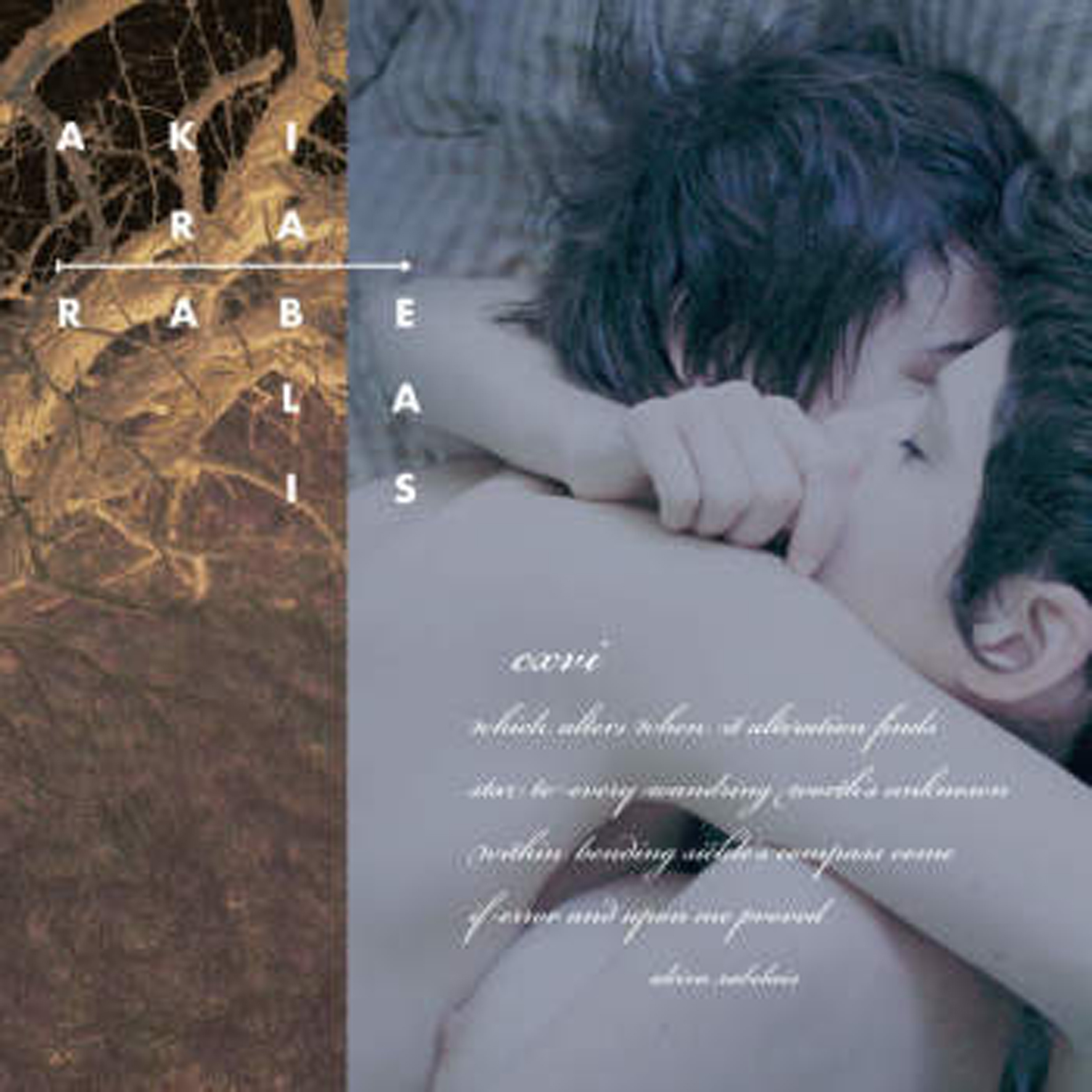 It took me an embarrassingly long time to realize it, but Akira Rabelais has quietly been one of the most unique and intriguing figures in experimental music for the last couple of decades, blurring the lines between collage, modern composition, ambient music, and conceptual art with each release. This latest album has apparently been a labor of love for years, drawing contributions from an eclectic array of collaborators including Harold Budd, Ben Frost, Kassel Jaeger, Stephan Mathieu, Geir Jenssen, and a pair of French photographers. Admittedly, a bevy of talented participants is not always an infallible recipe for a great album, but it was this time, as CXVI resembles a temporally dislocated and hallucinatory mélange of This Mortal Coil, Erik Satie, and a 19th century Parisian opium den.
It took me an embarrassingly long time to realize it, but Akira Rabelais has quietly been one of the most unique and intriguing figures in experimental music for the last couple of decades, blurring the lines between collage, modern composition, ambient music, and conceptual art with each release. This latest album has apparently been a labor of love for years, drawing contributions from an eclectic array of collaborators including Harold Budd, Ben Frost, Kassel Jaeger, Stephan Mathieu, Geir Jenssen, and a pair of French photographers. Admittedly, a bevy of talented participants is not always an infallible recipe for a great album, but it was this time, as CXVI resembles a temporally dislocated and hallucinatory mélange of This Mortal Coil, Erik Satie, and a 19th century Parisian opium den.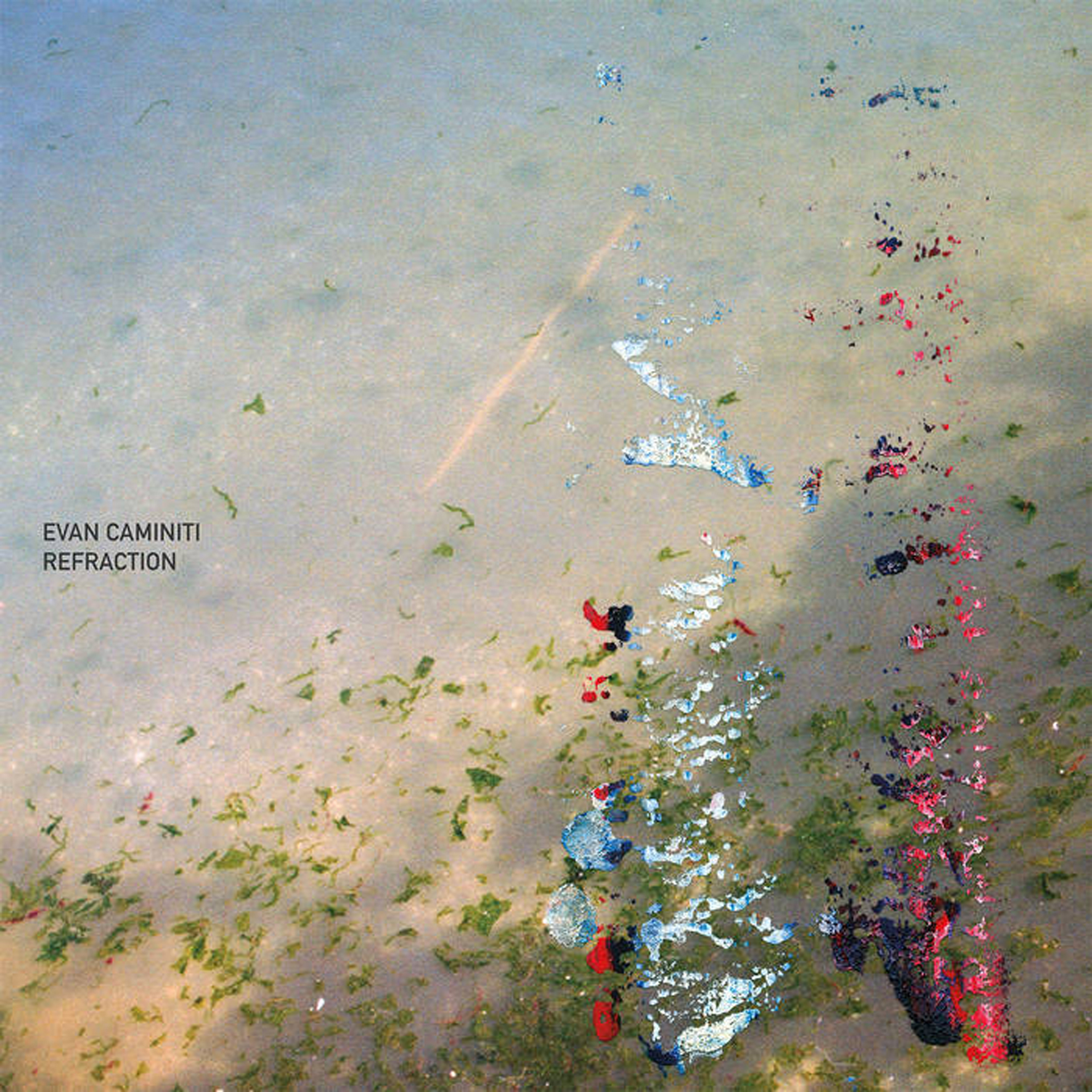 This latest EP is a companion piece of sorts to Caminiti's 2017 Toxic City album, albeit one that draws its inspiration from NYC's hidden oases of calm and space rather than its more claustrophobic and dystopian elements. Much like its predecessor, Refraction continues to explore Caminiti's deep interest in dub techno, yet he has stretched the boundaries of the form in an intriguing, thoughtful, and almost quixotic way: with these four pieces, he attempts to replace the rhythm of the dancefloor with a more languorous and organic pulse ("like a circulatory system made audible"). With casual and relatively inattentive listening, these experiments feel kind of like a classic Basic Channel or Mille Plateaux release that has been deconstructed and stretched into something vaporous and drifting rather than pulsing, but the depth and quiet beauty of Caminiti's unconventional vision comes into vivid focus when Refraction is experienced through headphones.
This latest EP is a companion piece of sorts to Caminiti's 2017 Toxic City album, albeit one that draws its inspiration from NYC's hidden oases of calm and space rather than its more claustrophobic and dystopian elements. Much like its predecessor, Refraction continues to explore Caminiti's deep interest in dub techno, yet he has stretched the boundaries of the form in an intriguing, thoughtful, and almost quixotic way: with these four pieces, he attempts to replace the rhythm of the dancefloor with a more languorous and organic pulse ("like a circulatory system made audible"). With casual and relatively inattentive listening, these experiments feel kind of like a classic Basic Channel or Mille Plateaux release that has been deconstructed and stretched into something vaporous and drifting rather than pulsing, but the depth and quiet beauty of Caminiti's unconventional vision comes into vivid focus when Refraction is experienced through headphones.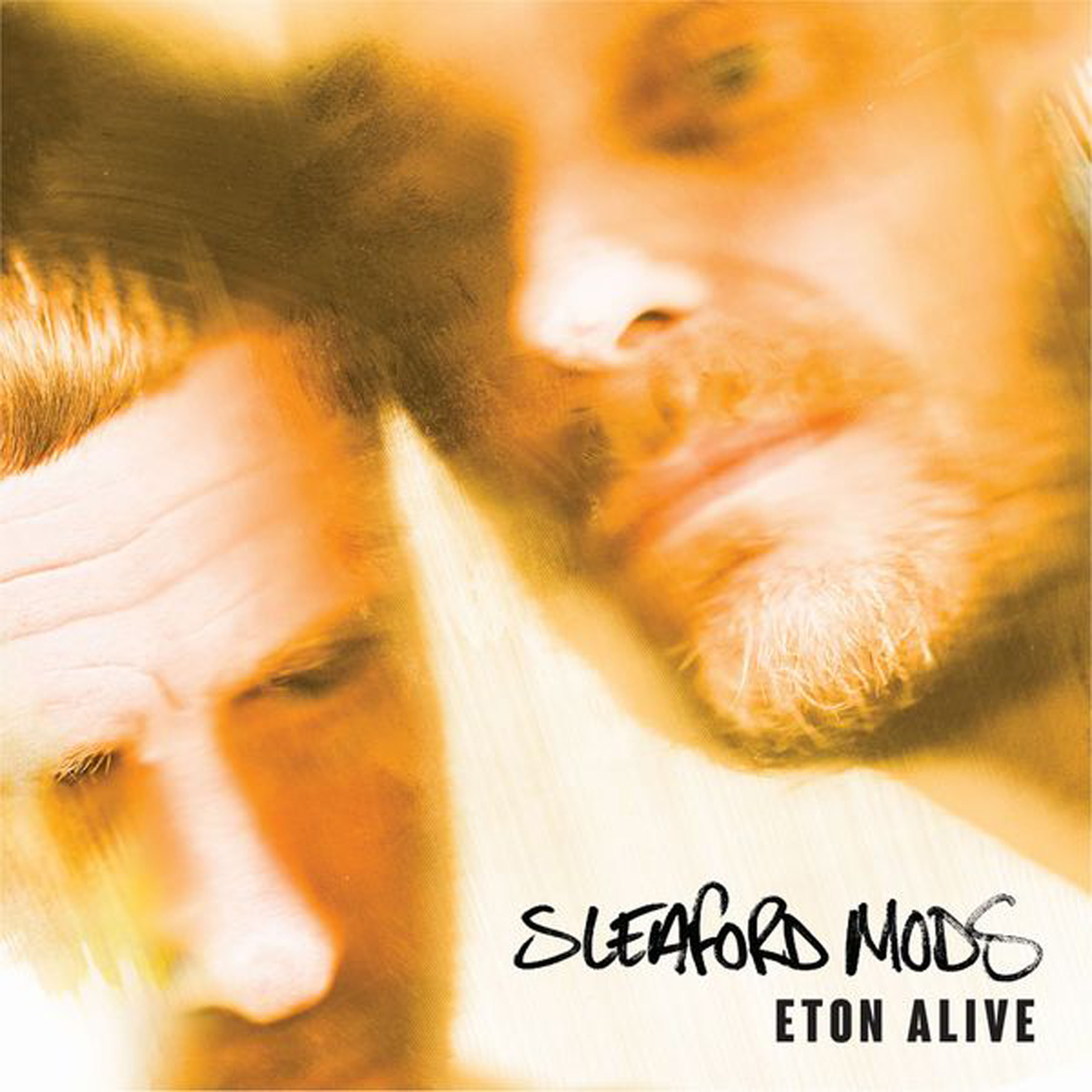 This prolific Nottingham-based duo are back with their fifth formal full-length and the first to be released on their own Extreme Eating imprint. Unsurprisingly, Eton Alive does not tamper much with the band’s signature backdrop of spare, simple grooves and Jason Williamson has no shortage of fresh topics that displease him. That consistency is a huge part of Sleaford Mods' charm though (along with Andrew Fearn’s eternally deadpan, head-bobbing presence, of course): sometimes the grooves are quite good and sometimes they are not, but they exist primarily as a platform for Williamson to unleash his vitriolic, heavily accented, and sometimes blackly funny stream-of-consciousness critiques of everything that rankles his sensibilities. Given the pair's continued hyper-constrained aesthetic and one-note approach to mood and melody, Eton Alive is a characteristically hit-or-miss affair, as everything depends the inspiration or impenetrability Williamson’s wordplay and how it fits with Fearn’s minimal, repetitive beats. That is to be expected though. During its strongest moments like "Top It Up," Eton Alive can be quite a bracing and invigorating reminder that Sleaford Mods are a singular bastion of integrity and spirited, free-floating hostility in a world that desperately needs both.
This prolific Nottingham-based duo are back with their fifth formal full-length and the first to be released on their own Extreme Eating imprint. Unsurprisingly, Eton Alive does not tamper much with the band’s signature backdrop of spare, simple grooves and Jason Williamson has no shortage of fresh topics that displease him. That consistency is a huge part of Sleaford Mods' charm though (along with Andrew Fearn’s eternally deadpan, head-bobbing presence, of course): sometimes the grooves are quite good and sometimes they are not, but they exist primarily as a platform for Williamson to unleash his vitriolic, heavily accented, and sometimes blackly funny stream-of-consciousness critiques of everything that rankles his sensibilities. Given the pair's continued hyper-constrained aesthetic and one-note approach to mood and melody, Eton Alive is a characteristically hit-or-miss affair, as everything depends the inspiration or impenetrability Williamson’s wordplay and how it fits with Fearn’s minimal, repetitive beats. That is to be expected though. During its strongest moments like "Top It Up," Eton Alive can be quite a bracing and invigorating reminder that Sleaford Mods are a singular bastion of integrity and spirited, free-floating hostility in a world that desperately needs both. Sebastian Banaszczyk's sound recycling project Bionulor's recent works have been part of larger multimedia projects such as theater, but for A. S., he has returned to a purely audio format. He maintains a thematic unity to the album, however, making it as conceptual as any of his prior works. For this one, his starting point was the work of Russian composer Alexander Scriabin. Banaszczyk strikes that perfect balance between creating something new while allowing the source material to be recognizable throughout.
Sebastian Banaszczyk's sound recycling project Bionulor's recent works have been part of larger multimedia projects such as theater, but for A. S., he has returned to a purely audio format. He maintains a thematic unity to the album, however, making it as conceptual as any of his prior works. For this one, his starting point was the work of Russian composer Alexander Scriabin. Banaszczyk strikes that perfect balance between creating something new while allowing the source material to be recognizable throughout. Mark Solotroff’s contributions to harsh electronic music cannot be overstated. Beginning with the adult bookstore sleaze of the 1980s power electronics project Intrinsic Action into the present day psychologically disturbing noise of Bloodyminded (which, in a live context, becomes the perfect deconstruction of rock performance) and the doom metal tinged Anatomy of Habit, he has been an influential force for the past 35 years. This does not even take into account his multitude of solo and side projects, such as these two recent cassettes. All of his work is joined together by a single, distinct thread: a love of analog synthesizers that borders on the obsessive. Here those synths are used to create the perfect soundtrack to city isolation.
Mark Solotroff’s contributions to harsh electronic music cannot be overstated. Beginning with the adult bookstore sleaze of the 1980s power electronics project Intrinsic Action into the present day psychologically disturbing noise of Bloodyminded (which, in a live context, becomes the perfect deconstruction of rock performance) and the doom metal tinged Anatomy of Habit, he has been an influential force for the past 35 years. This does not even take into account his multitude of solo and side projects, such as these two recent cassettes. All of his work is joined together by a single, distinct thread: a love of analog synthesizers that borders on the obsessive. Here those synths are used to create the perfect soundtrack to city isolation.
